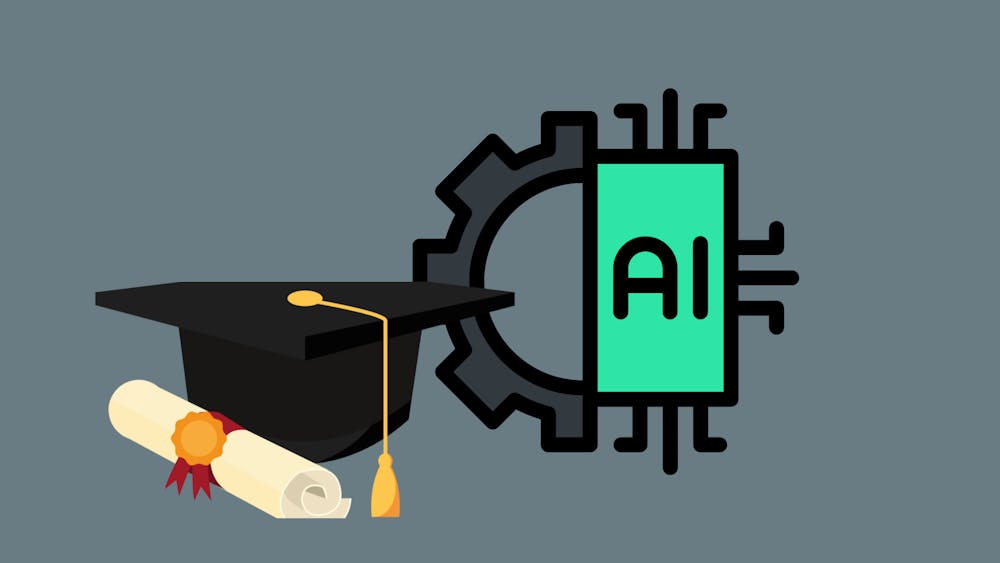The reshaping of higher education by artificial intelligence
AI is rapidly restructuring how we approach higher education.
The progression of technology is inevitable, as is our civilization’s need to adapt to that progression. The implementation of AI in these areas is growing faster than some can keep up with, reflecting the revolutionary changes brought about by previous technological marvels like the internet, computers, and even the iPhone. Where those innovations have become commonplace, artificial intelligence now takes center stage as the latest in a long line of sensations that is as hotly contested as it is openly welcomed.
While there are those that remain worried about AI’s presence in higher education, many are embracing the utility of this new technology, focusing on the ways it can benefit curriculum at the undergrad and post-grad level.
“It has positive and negative impacts,” says Paul Newell, associate director of Student Success & Career Development at Otterbein University. “It can be used as a tool to optimize [student] resumes. It can help students who are not strong writers write a decent cover letter" and "navigate their searches better.”
Higher education institutions are saying that it’s crucial to alleviate the fear and stigma surrounding AI and embrace the good it can do to enhance learning for educators and students alike. Modeling the technology to be an ally rather than an enemy is one of the first steps schools are taking to ensure that faculty members are comfortable integrating AI into their classrooms, while also maintaining academic integrity among their students. That way, it is argued, AI can be used for the benefit of students, bringing a welcome reshaping of the courses schools are teaching now.
Currently, AI chatbots are being implemented to connect with students, giving them ongoing assistance with questions about financial aid, career development and opportunities, and advising. Administrative processes are being streamlined through automation through using AI for student record systems, information technology, scheduling, and budgeting. As a result, the customization of teaching and learning has become more personalized with the introduction of virtual teaching assistants that can help students based off of their different academic needs and struggles. Many professors at Otterbein are now actively doing this. Curricula are changing, pushing for the use of AI as a tool for assistance.
With that, however, are the things about artificial intelligence that schools are urging people to be wary of. They maintain that, while AI shows great promise and isn’t necessarily malicious, schools should be thinking critically about what fundamental aspects of education will be changing as AI grows, as well as how best to handle those changes. Most of those changes have to do with the possibility that education may shift away from entire academic disciplines, and the skill sets taught within them.
“I think, in higher education, [AI] is going to change the way we instruct, and maybe even how we assess student’s progress,” Newell says further. “We’ve been so used to having students do papers and then turning them in; we may not be doing that anymore. We may incorporate a little bit of AI during the research process, but I also think that as AI gets bigger and better, we’re going to have to adjust how we assess student learning, and what courses we teach … Some majors may not align with that.”
A major cause for concern among academics is what areas of study will be affected by AI. Having one’s field or skill set replaced entirely by technology is without doubt a worrisome future, and the inevitability of this shift is even more so. The other end of that, though, is that the adoption of AI in education may pave the way for new fields of study.
Kayla Montanaro, a career advisor at Otterbein, says, “We may see some majors dwindle and go away, but that also means that we may see some new and innovative majors that we don’t currently have right now. So, who knows what that will look like?”
Ultimately, the use of AI brings as many promises as it does concerns, and as its utility grows, so will the stigma surrounding it. What’s unavoidable is that the adoption of AI will continue, and as a result, society and education will have to shift and evolve to accommodate the new needs. It remains important then to continue to have discussions about the benefits of AI and make clear the ways it can be used improperly so that it can have the most positive affects going forward.
“I have seen smaller universities similar to Otterbein close because they are not innovative, and they weren’t willing to at least try a new approach,” Newell says. “I think it’s [important to] keep an open mindset, be innovative, and get people on board.”








